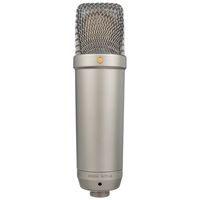Amédée-Ernest Chausson (1855 – 1899) was a French
Romantic composer who died just as his career was
beginning to flourish. Born in Paris into an affluent
bourgeois family, Ernest Chausson was the sole
surviving child of a building contractor who had made
his fortune assisting Baron Haussmann in the
redevelopment of Paris in the 1850s. To please his
father, Chausson studied law and was appointed a
barrister for the Court of Appeals, but had little or
no interest in the profession. He frequent...(+)
Amédée-Ernest Chausson (1855 – 1899) was a French
Romantic composer who died just as his career was
beginning to flourish. Born in Paris into an affluent
bourgeois family, Ernest Chausson was the sole
surviving child of a building contractor who had made
his fortune assisting Baron Haussmann in the
redevelopment of Paris in the 1850s. To please his
father, Chausson studied law and was appointed a
barrister for the Court of Appeals, but had little or
no interest in the profession. He frequented the Paris
salons, where he met celebrities such as Henri
Fantin-Latour, Odilon Redon, and Vincent d'Indy. Before
deciding on a musical career, he dabbled in writing and
drawing.
In 1879, at the age of 24, he began attending the
composition classes of Jules Massenet at the Paris
Conservatoire; Massenet came to regard him as "an
exceptional person and a true artist". Chausson had
already composed some piano pieces and songs.
Nevertheless, the earliest manuscripts that have been
preserved are those corrected by Massenet. At the
Conservatoire, Chausson also studied with César
Franck, with whom he formed a close friendship that
lasted until Franck's death in 1890. Chausson
interrupted his studies in 1881, after a failed attempt
to win the Prix de Rome.
During 1882 and 1883, Chausson, who enjoyed travel,
visited Bayreuth to hear the operas of Richard Wagner.
On the first of these journeys, Chausson went with
d'Indy for the premiere of Wagner's Parsifal, and on
the second trip he went with his new spouse Jeanne
Escudier (1862–1936), with whom he was to have five
children.
When only 44 years old, Chausson died while staying at
one of his country retreats, the Château de Moussets,
in Limay, Yvelines. Riding his bicycle downhill,
Chausson hit a brick wall and died instantly. The exact
circumstances remain unclear; although probably an
accident, there has been the suggestion of suicide, as
Chausson was prone to depression. This suicide theory
was propounded by Debussy's biographer Edward
Lockspeiser, but has been firmly rejected more recently
by Chausson's own biographer Ralph Scott Grover. He was
buried in Père Lachaise Cemetery in Paris. His funeral
was attended by many leading figures of the arts,
including Duparc, Fauré, Albeniz, Redon, Edgar Degas,
Auguste Rodin, Henri de Régnier, Pierre Louÿs and
Debussy. While Chausson's brotherly relationship with
Debussy had ended abruptly five years earlier,
following his disapproval of Debussy's promiscuity,
Debussy never ceased to admire Chausson's music.
he creative work of Chausson is commonly divided into
three periods. In the first, his output was
stylistically dominated by the influence of Massenet.
The second period, dating from 1886, is marked by a
more dramatic character, deriving partly from
Chausson's contacts with the artistic milieux in which
he moved. From his father's death in 1894 dates the
beginning of his third period, during which he was
especially influenced by his reading of the symbolist
poets and Russian literature, particularly Turgenev,
Dostoyevsky, and Tolstoy.
Chausson's work is deeply individual, but it does
reflect some technical influences of both Wagner and
his other musical hero, Franck. Stylistic traces not
only of Massenet but also of Brahms can be detected
sometimes. In general, Chausson's compositional idiom
bridges the gap between the ripe Romanticism of
Massenet and Franck and the more introverted
Impressionism of Debussy. Several delicate and
admirable songs came from Chausson's pen. He completed
one opera, Le roi Arthus (King Arthur). His orchestral
output was small, but significant. It includes the
symphonic poem Viviane; the Symphony in B-flat, his
sole symphony; Poème for violin and orchestra, an
important piece in the violin repertoire; and the
dramatic and haunting song-cycle Poème de l'amour et
de la mer.
Chausson is believed to be the first composer to use
the celesta. He employed that instrument in December
1888 in his incidental music, written for a small
orchestra, for La Tempête, a French translation by
Maurice Bouchor of Shakespeare's The Tempest. Not at
all prolific, Chausson left behind only 39
opus-numbered pieces. Musical creation for him always
proved to be a long, painful struggle. However, the
quality and originality of his compositions are
consistently high, and several of his works continue to
make occasional appearances on programmes of leading
singers, chamber music ensembles and orchestras.
Source: Wikipedia
(https://en.wikipedia.org/wiki/Ernest_Chausson)
Although originally written for Voice & Piano, I
created this Interpretation of "La Dernière Feuille"
from "Sept Mélodies" (Op. 2 No. 4) for English Horn &
Strings (2 Violins, 2 Violas, & Cello).






